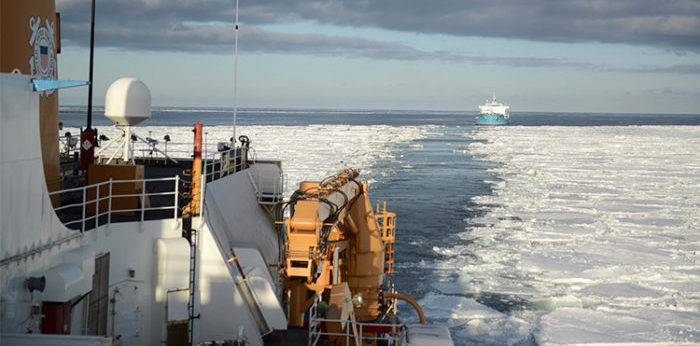The US Navy in collaboration with the US Coast Guard, released a request for proposal (RFP) on March 2, 2018, for the design of the USCG’s heavy polar icebreaker (HPIB), with options for detail design and construction for up to three HPIBs. A single contract award will be made in 2019.
The RFP is for Advance Planning and Engineering Efforts, with options for the Detail Design and Construction (DD&C) of up to three Heavy Polar Icebreaker cutters.
The Commandant of the Coast Guard, Admiral Paul Zukunft, stated:
Today’s action marks a major milestone in the collective efforts by the U.S. Coast Guard and the U.S. Navy to deliver a new fleet of Polar Icebreakers. These multi-mission vessels are key components of our national strategy to advance U.S. interests and to keep pace with the growing volume of commercial activities in the Polar Regions. New heavy Polar Icebreakers are the most effective and efficient way of meeting our current and anticipated mission demands in these critical regions, and I’m ecstatic that we are moving smartly to deliver these national assets to the U.S. Coast Guard fleet.
The polar icebreaking fleet that is operating, currently includes one 399-foot heavy icebreaker, the “Coast Guard Cutter Polar Star” and one 420-foot medium icebreaker. These cutters are designed for open-water icebreaking .
“Polar Star” returned to operations in late 2013. Since then, it has completed three Operation Deep Freeze deployments to resupply McMurdo Station in Antarctica. USCG expects Polar Star to remain in service through approximately 2020 to 2023.
The USCG also has a second heavy icebreaker, “Coast Guard Cutter Polar Sea”, which was placed in inactive status by the service in 2011. USCG is evaluating options to reactivate the ship, parts from which were used to reactivate Polar Star.































































